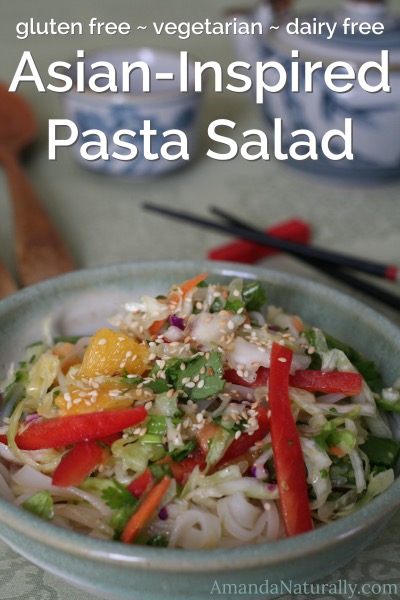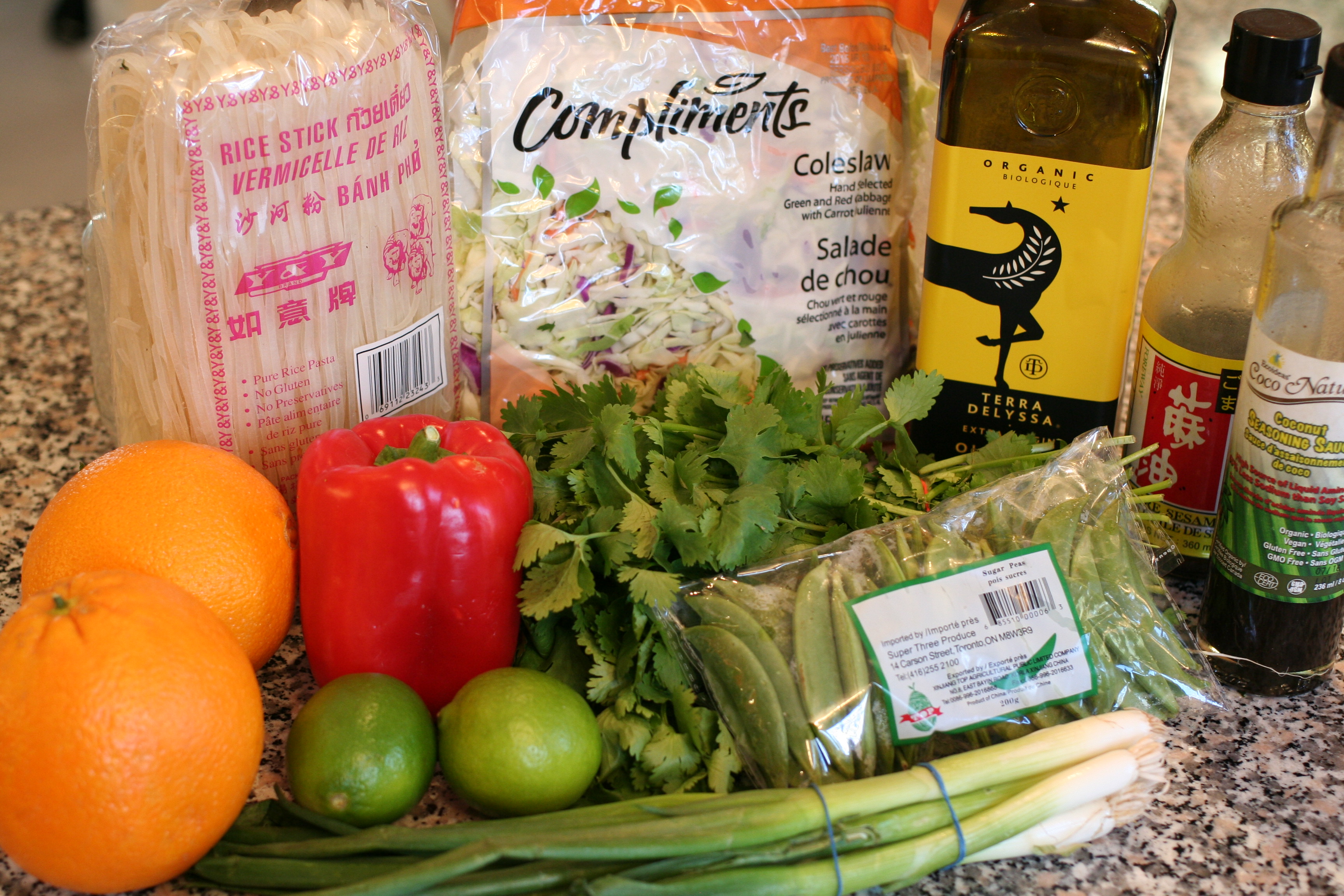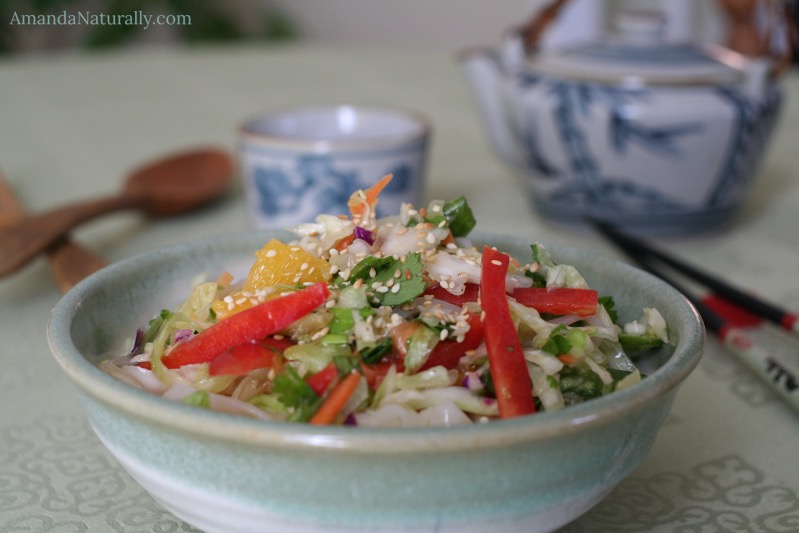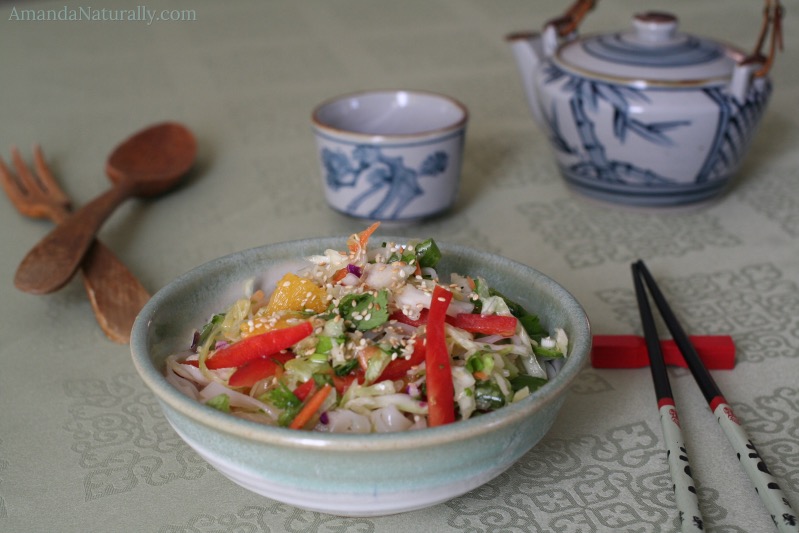 So you might be curious as to why this grain-eschewing gal is posting a recipe for a pasta salad. Let me tell you!
So you might be curious as to why this grain-eschewing gal is posting a recipe for a pasta salad. Let me tell you!
I am a huge fan of balance, as long as it doesn’t harm you. There are foods that I am physically unable to eat (dairy, legumes), chemicals that I avoid like the plague (artificial sweeteners, colours), foods that I choose to avoid because of my genetic predispositions and our understanding of how they damage our gut (gluten), and foods that aren’t the end of the world if I eat, but do mess up my system a little (vegetable oils, brown rice, quinoa, corn). Then there are some grey-area foods that my body tolerates just fine, such as white rice.
Wait what? White not brown rice? Correct. But what about the fibre? Vegetables contain fibre, it’s a non-issue. But white rice is a grain! Correct. And grains cause gut irritation, nutrient deficiencies and inflammation! Correct.
So why white rice?
Well first of all – let’s take a look at the cultures who have eaten rice for thousands of years. I challenge you to find a single culture who eats brown rice. Spoiler: you won’t be able to. Why not? There was an inherent understanding, a wisdom passed down through generations, about the importance of polishing rice.
Rice is harvested “brown”, which means the bran and the germ are still on the grain. The bran is the plant’s defence mechanism against predators. These defence mechanisms (phytates, lectins) can cause an awful lot of damage to the gut – especially in those susceptible. Not to mention they bind to minerals which prevents us from absorbing them. So even if technically the whole rice grain contains more nutrients than the polished grain, it does not take into account our inability to obtain nutrients from them. Next is the germ. It contains most of the nutrients required for nourishing the grain and allowing it to reproduce. But it also specifically contains protease inhibitors, that prevent germination until the ideal environment is achieved. You don’t see rice grains germinating while still on the plant, or in your cupboard, do you? But create the right environment and they will start to sprout! Protease inhibitors are responsible for this. What exactly are protease inhibitors? They inhibit enzymes that break down proteins – so if you’re relying on whole grains and legumes as your primary protein source, keep in mind that these protease inhibitors are significantly reducing the small amount of protein that these plants actually contain. (note: it is possible to reduce the impact of phytates, lectins and enzyme inhibitors by soaking, sprouting and fermenting your grains and legumes)
Since most of the gut-irritating, nutrient-binding, inflammatory compounds of rice are found in the bran and the germ, people who have relied on rice for thousands of years, learned quickly that by polishing the grain, you can remove most of the irritating compounds!
Unfortunately our ego-centric, North American approach has gotten us in trouble once again. We accused these cultures of eating rice the wrong way, because they’re getting rid of the fibre! Heaven forbid! Little did we understand how important removing that fibre really was…
Okay, so how bad is brown rice for you really? Well if your health is on point, then be my guest, eat it. But I can speak from both personal and clinical experience when I say that brown rice does a number on the digestive tract. I have not had a single client be able to reintroduce brown rice without experiencing some kind of digestive distress. And if you have an autoimmune condition? Well it’s out of the question. Learn more about that here.
So what does this all mean? For my personal health issues, I have discovered that I do very well on white rice. It is often called a safe starch – which is exactly how I feel about it. Now, don’t get me wrong, I am in no way expecting to obtain all sorts of nutrients from white rice! But I also know it’s not going to hurt me. So while it doesn’t routinely replace nutrient-dense starches like root veggies and tubers, it does make an appearance in my diet from time to time! And now we’ve come full circle to how I started this post…
Balance!
White rice is not only delicious (hello Thai food and sushi!), but it is fairly ubiquitous. Most restaurants have rice as a side dish, many gluten-free treats use white rice and to be honest, when my gut has been damaged by an accidental dairy-bombing, white rice is one of the only foods I can tolerate for the first 24 hours. That and broth of course!
Back to the pasta salad! Last week I was asked to bring a pasta salad to a party I was attending. There were several dietary limitations to consider – namely a child with nut allergies, a few people who follow a vegetarian diet, and my own. I decided to use white rice noodles, also known as vermicelli, instead of gluten-free pasta. Gluten-free pasta is usually made with brown rice, quinoa, corn etc. so I can eat it in a pinch, but I really prefer not to. Since vermicelli is an Asian pasta, I used that as my inspiration and created this Asian Inspired Pasta Salad! Enjoy!


- ½ cup extra virgin olive oil
- juice of 2 limes
- 1½ tbsp sesame oil
- 2 tbsp coconut aminos (coconut seasoning in Canada) or gluten-free tamari
- sea salt
- black pepper
- 1 red pepper, cut into match sticks
- 2 cups of snap peas, ends trimmed, peas cut in half
- 3 green onions, diced
- 2 oranges, segmented and cut into bite-sized pieces
- 1 one pound bag of coleslaw mix
- ½ packed cup cilantro, chopped
- 1 bag of vermicelli, cook as directed
- 2-3 tbsp sesame seeds, toasted
- Combine all dressing ingredients in a jar and mix well.
- Prepare all salad ingredients, except the vermicelli, toss together in a bowl.
- Add dressing to the veggies and toss to combine. Let sit for an hour or so, if you have the time!
- Prepare the vermicelli as directed - it usually only takes a few minutes in boiling water.
- As soon as the vermicelli is done (don't overcook it!), drain it, rinse under cold water, drain again and toss with the veggies.
- Chill before serving.
- Top with toasted sesame seeds.
- Chopped cashews or even peanuts (if tolerated) would be a great addition to this dish.
- Looking to add protein? Some cold shrimp would be perfect!
- Don't have bagged coleslaw? Not to worry. Simply add in veggies that stand up well in coleslaw - think carrots, cabbage, broccoli and kale. Shred or slice thinly and use in place of the coleslaw mix.
- You can make this 100% grain free by using zucchini noodles or sweet potato starch noodles (often found at Asian supermarkets)


Sorry, comments are closed for this post.